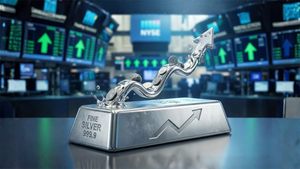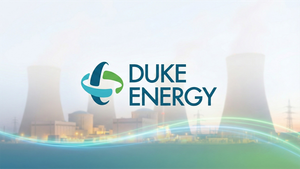
Microsoft is embarking on an unprecedented financial commitment, earmarking approximately $80 billion globally for AI infrastructure in fiscal year 2025. This colossal investment signals the tech giant's aggressive strategy to cement its leadership in the rapidly evolving artificial intelligence landscape. The immediate implications are clear: a significant boost to the capabilities and reach of Azure AI services and accelerated adoption of its Copilot suite, even as the massive capital outlay is expected to exert temporary pressure on cloud gross margins. This move is poised to redefine Microsoft's trajectory and intensify the global "AI arms race."
The Unprecedented Bet: What Happened and Why it Matters
In a strategic declaration that sent ripples across the tech world, Microsoft (NASDAQ: MSFT) announced an estimated $80 billion capital expenditure for AI infrastructure in fiscal year 2025. This monumental investment, with over half allocated to bolstering capabilities within the United States, represents a direct response to the explosive demand for AI computing power. It signifies Microsoft's commitment to building the foundational muscle necessary for the next generation of intelligent applications. This sum is a substantial increase over prior investments, highlighting the accelerating pace of AI development.
Key regional commitments underscore the global nature of this strategy. The United Kingdom is set to receive a $30 billion investment from Microsoft over four years (2025-2028), with approximately $15 billion specifically dedicated to building out cloud and AI infrastructure. This includes the development of the UK's largest supercomputer, equipped with over 23,000 NVIDIA (NASDAQ: NVDA) GPUs, in partnership with Nscale Global Holdings Ltd. In Norway, a $6.2 billion, five-year agreement with a joint venture of Nscale Global and Aker ASA (OSL: AKER) will establish hyperscale AI infrastructure in Narvik, utilizing the region’s abundant hydropower for sustainable operations. Similar significant investments include a deal valued between $17.4 billion and $19.4 billion over five years with Nebius Group N.V. in New Jersey, USA, and multi-billion dollar commitments in India and Italy.
The timeline leading to this moment has been a swift escalation of AI development:
- 2015: OpenAI, a crucial future partner, is founded.
- 2019: Microsoft initiates its pivotal partnership with OpenAI.
- 2020: Microsoft launches a new supercomputer in Azure tailored for OpenAI.
- Late 2022: The launch of ChatGPT ignites the generative AI boom, accelerating Microsoft's plans.
- Fiscal Year 2024: Microsoft's capital expenditures reach approximately $50 billion, with a significant portion towards AI.
- January 2025: Microsoft Vice Chair and President Brad Smith publicly announces the $80 billion plan for FY2025.
- September 2025: Major deals, including the $6.2 billion Norway project and the $30 billion UK commitment, are unveiled.
Key players orchestrating this massive undertaking include Microsoft's leadership—CEO Satya Nadella, CFO Amy Hood, and Vice Chair and President Brad Smith—alongside strategic partners like OpenAI, Nscale Global, Aker ASA, Nebius Group N.V., and hardware giants NVIDIA (NASDAQ: NVDA), AMD (NASDAQ: AMD), and Intel (NASDAQ: INTC). Financial partners like BlackRock (NYSE: BLK) and MGX are also collaborating on an international investment fund potentially worth up to $100 billion for AI infrastructure. Initial market reactions have been largely positive, with investor optimism reflected in Microsoft's stock performance and an intensified "AI arms race" among tech giants. However, some concerns persist regarding short-term gross margin pressure and the sustainability of such enormous energy demands.
The AI Gold Rush: Who Wins and Who Faces Challenges
Microsoft's $80 billion AI infrastructure investment is poised to create distinct winners and losers across various sectors, fundamentally reshaping the competitive landscape. This massive capital injection into the AI ecosystem will fuel unprecedented demand for specialized hardware, energy, and AI-driven services.
Leading the charge among the beneficiaries are hardware manufacturers, particularly semiconductor companies. NVIDIA (NASDAQ: NVDA) is a primary winner, as Microsoft continues to heavily procure its GPUs, including those based on the advanced Blackwell architecture, to power its Azure AI infrastructure. AMD (NASDAQ: AMD) is also deeply entrenched, with its Instinct MI300X Accelerators and ROCm software integrated into Azure, especially for OpenAI services. Intel (NASDAQ: INTC) stands to benefit from increased demand for its Xeon Scalable processors for servers and its significant manufacturing deal with Microsoft for 18A process technology. These companies will see booming demand for their high-performance computing components essential for AI workloads.
Energy providers are another clear winner. AI data centers are significantly more energy-intensive than traditional ones, requiring two to three times more electricity. Microsoft's expanding global data center footprint, projected to grow by 50% in the next three years, will create unprecedented energy demand. Microsoft is actively pursuing carbon-free energy solutions, partnering with Constellation Energy (NASDAQ: CEG) for nuclear power and exploring fusion energy, indicating a robust demand for diverse and sustainable power sources. Furthermore, data center operators and construction firms involved in designing, building, and operating these specialized AI-enabled facilities will experience a significant boost, leading to industrial growth and job creation.
Cloud customers and AI startups will also reap rewards. Enhanced Azure AI infrastructure provides more scalable, powerful, and efficient resources. Over 65% of Fortune 500 companies reportedly use Azure OpenAI services, and over 70,000 enterprises have adopted agentic AI tools like Azure AI Studio and Copilot Studio. This enables businesses, from established enterprises to nascent AI startups, to leverage cutting-edge AI for productivity gains and innovation. Microsoft has pledged to support 2,500 startups by 2027. Companies developing AI-optimized software and services that integrate with Microsoft's AI ecosystem, and workforce training and skilling providers for AI competencies, also stand to gain.
Conversely, direct cloud and AI competitors face immense pressure. While Amazon Web Services (NASDAQ: AMZN) and Google Cloud (NASDAQ: GOOGL) are also investing heavily, Microsoft's $80 billion commitment intensifies the "AI infrastructure arms race," forcing rivals to significantly increase their own expenditures to maintain competitiveness, potentially impacting their margins or market share. Even OpenAI, a close partner, is diversifying its infrastructure partnerships with Oracle (NYSE: ORCL) and Google Cloud, signaling a move to reduce reliance on a single vendor.
Companies slow to adapt to AI risk being left behind. Industries and businesses hesitant to adopt AI and scalable cloud infrastructure may be outpaced. This includes sectors reliant on routine human labor, where generative AI can automate tasks like ad copy creation (impacting traditional advertising agencies like Omnicom Group (NYSE: OMC)) or code generation and data analysis (affecting IT consulting firms like Capgemini (EPA: CAP) and Accenture (NYSE: ACN)). Staffing and recruitment agencies such as ManpowerGroup (NYSE: MAN) may also see reduced demand as AI automates many traditional roles. Companies with limited budgets, skills, or outdated legacy data infrastructure will find it challenging to integrate AI effectively, widening the competitive gap. Finally, the "colossal amounts of power" needed by AI data centers could strain local electricity grids, potentially leading to increased operational costs or instability in regions with less robust infrastructure.
A New Industrial Revolution: Industry Impact and Broader Implications
Microsoft's staggering $80 billion investment in AI infrastructure signals a profound and transformative period, impacting not only technological advancement but also competitive landscapes, policy frameworks, and the broader societal implications of artificial intelligence. This capital allocation is not merely an expenditure; it is a profound declaration of intent with significant implications, drawing parallels to historical technological shifts.
This investment highlights a broader industry trend toward vertically integrated, AI-native firms that aim to deliver end-to-end services powered by intelligent systems. This approach seeks to fundamentally redefine how industries operate, potentially displacing existing workflows rather than merely enhancing them. The sheer scale of this infrastructure build-out is considered one of the largest capital formation events in modern history. The investment will accelerate AI development by alleviating supply constraints for critical components like chips and servers, thereby speeding up the training and deployment of increasingly complex AI models. With over half of the investment targeting the U.S., Microsoft aims to reinforce America's position as a leader in AI innovation amidst geopolitical competition.
The ripple effects on competitors are substantial. Microsoft's aggressive stance intensifies pressure on its primary cloud rivals, Amazon Web Services (AWS) (NASDAQ: AMZN) and Google Cloud Platform (GCP) (NASDAQ: GOOGL). Both AWS and Google are dedicating tens of billions to their own AI-focused data centers and hardware, escalating an already fierce investment race. Microsoft's lead in generative AI adoption, largely due to its partnership with OpenAI, compels competitors to rapidly advance their own generative AI offerings. While AWS maintains overall cloud leadership, its AI engagement lags, whereas Google Cloud is leveraging its Tensor Processing Units (TPUs) and Gemini models for deeper AI integration.
The relationship between Microsoft and OpenAI, a strategic alliance that has significantly influenced the AI sector, is also evolving. While Microsoft's prior investments in OpenAI, exceeding $13 billion, have been crucial for providing the Azure supercomputing infrastructure, Microsoft is now actively increasing its investments in developing its own AI computing clusters and large-scale models, such as MAI-1. This strategic pivot aims to reduce its reliance on external providers and enhance its competitive capabilities, indicating a move towards a multi-model approach. Notably, OpenAI has also diversified its infrastructure partnerships beyond Microsoft Azure, entering into agreements with Oracle (NYSE: ORCL) and Google Cloud, signaling a shift away from exclusive reliance.
This massive infrastructure investment brings forth critical regulatory and policy considerations. Concerns about the emergence of an "AI monopoly, duopoly, or triopoly" are growing due to the substantial costs and specialized hardware required, which create high barriers to entry for smaller companies. Regulatory bodies are scrutinizing "co-opetition" agreements to prevent anti-competitive practices. The immense energy consumption of AI data centers, projected to consume up to 9% of the U.S.'s total electricity by 2030, raises concerns about grid reliability, escalating energy costs, and increased greenhouse gas emissions. Policymakers face challenges in ensuring sufficient clean energy supply and promoting greater energy efficiency. Beyond energy, the environmental impact includes high water usage, electronic waste, and reliance on rare earth minerals. Data privacy, sovereignty, and geopolitical competition from countries like China further complicate the regulatory landscape.
Historically, the current expansion of AI infrastructure is compared to pivotal technological transformations like the Industrial Revolutions, often dubbed the "electricity of our age," and the massive capital formation during the 19th-century railway expansion and the late 20th-century internet boom. These comparisons highlight the unprecedented scale of private investment in foundational infrastructure and serve as both an inspiration for transformative growth and a cautionary tale about potential market bubbles and corrections.
The Road Ahead: What Comes Next
Microsoft’s $80 billion AI infrastructure investment in fiscal year 2025 sets the stage for a transformative period, reshaping its own strategic direction and the broader AI industry. The coming years will be defined by both opportunities and challenges as this massive bet unfolds.
In the short-term (1-2 years), Microsoft (NASDAQ: MSFT) will likely see accelerated growth in its Azure cloud computing services, driven by surging customer demand for AI capabilities and an easing of chip supply constraints. This will solidify Azure’s market share in cloud computing. Microsoft is expected to deliver deeper integration of AI across its entire product ecosystem, including Microsoft 365 Copilot and AI-powered Windows PCs featuring dedicated Neural Processing Units (NPUs). A key immediate focus will be addressing any lingering capacity constraints in its data centers, as AI demand has been rapidly outpacing build-out. The company will also continue its efforts in monetizing its Copilot services, though the return on investment (ROI) is still in early stages. For the wider industry, this investment sustains booming demand for AI infrastructure components, particularly benefiting semiconductor companies like NVIDIA (NASDAQ: NVDA) and AMD (NASDAQ: AMD). It will also continue to exert immense pressure on rivals like Amazon Web Services (AWS) (NASDAQ: AMZN) and Google Cloud Platform (GCP) (NASDAQ: GOOGL), forcing them to escalate their own capital expenditures.
Looking at the long-term (3-5+ years), Microsoft's ambition is to cement its status as an "AI-first" company, with AI fundamentally embedded across its core offerings. This involves creating a powerful "AI flywheel"—an ecosystem where deeply integrated AI across Azure, Office 365, and Windows fosters user dependency, generates sustainable recurring revenue, and establishes high barriers to exit. Microsoft aims to dominate enterprise AI, leveraging its strong foothold to drive industry-wide transformations across various sectors. The long-term vision also includes the proliferation of hyper-personalized and "agentic AI" experiences, where intelligent systems make autonomous decisions. Microsoft is actively pursuing vertical integration, including its ventures into nuclear energy, to control critical infrastructure and reduce dependencies. The wider industry will likely witness further vertical integration among tech giants, the emergence of entirely new AI-driven industries and services (beyond traditional SaaS to "AI-as-a-Service"), and an oligopolistic cloud infrastructure market dominated by Microsoft, AWS, and Google Cloud, with AI as the primary battleground.
Strategic pivots or adaptations are crucial for all players. Microsoft is strategically pivoting towards diversification and self-sufficiency in AI model development, evident through its acquisition of Inflection AI's team, the appointment of Mustafa Suleyman to lead in-house model creation, and its exploration of collaborations with other AI companies like Anthropic. Its deep dive into nuclear energy technology is a significant adaptation to meet escalating power demands. Competitors must respond with escalated infrastructure investments, development of proprietary AI-optimized hardware and custom silicon, differentiated generative AI integration, diversified AI model ecosystems, and a strong focus on energy efficiency. All companies will need to adapt to a rapidly evolving and complex global AI regulatory landscape.
Market opportunities include massive enterprise AI adoption, significant growth in AI-powered software and services, and a booming AI skilling and training market. However, challenges persist, such as AI adoption barriers (data quality, talent shortages, unclear ROI), high costs and monetization uncertainties, regulatory complexity, intense competition, and potential capacity shortfalls. Geopolitical competition and cybersecurity risks also loom large. Ultimately, the AI landscape could evolve into scenarios ranging from collaborative "Global Orchards" to fragmented "Techno Archipelagos." Given Microsoft's investment, a future leaning towards "Walled Gardens" dominated by a few major tech giants seems plausible, where Microsoft’s control over its AI stack creates a formidable ecosystem, yet still within a dynamic and competitive environment.
The AI Age Dawns: A Concluding Assessment
Microsoft's monumental $80 billion AI infrastructure investment for fiscal year 2025 is more than a spending spree; it is a definitive strategic maneuver marking a new era of technological competition and innovation. This unprecedented commitment underscores the company’s intent to not only participate but to lead and shape the burgeoning artificial intelligence revolution.
Key takeaways from this event are the sheer scale of investment, highlighting AI infrastructure as the foundational layer for future growth; the strategic importance of AI woven into every facet of Microsoft's (NASDAQ: MSFT) offerings, from Azure to Copilot; and the critical role of both strategic partnerships (like OpenAI) and internal capabilities (custom silicon development) in achieving market dominance. This investment directly addresses the explosive demand for generative AI and cloud services, ensuring Microsoft can meet the computational requirements of an AI-driven world. The regional commitments, such as the $30 billion in the UK and $6.2 billion in Norway, demonstrate a global vision for AI infrastructure deployment.
Moving forward, the market is unequivocally defined by an intensified "AI arms race." This will drive continued, unprecedented demand for AI computing power, specialized data centers, and high-performance components, primarily benefiting companies like NVIDIA (NASDAQ: NVDA), a crucial supplier of GPUs. The focus on infrastructure suggests that controlling superior and scalable AI compute will be a significant competitive differentiator. AI integration will become even more central to all cloud offerings, fundamentally transforming the cloud landscape and creating an oligopoly among the hyperscale providers.
The significance and lasting impact of this investment are profound. It solidifies Microsoft's position at the forefront of the AI revolution, particularly within cloud AI services (Azure) and enterprise AI solutions (Copilot). It will accelerate innovation across industries and foster economic development in regions hosting its new data centers. This aggressive capital expenditure sets a new benchmark for competing effectively in the global AI economy. Ultimately, it underscores Microsoft's long-term ambition to become a truly "AI-first" company, fundamentally embedding AI across its core offerings and reshaping how businesses and consumers interact with technology.
For investors, vigilance is paramount. Several factors demand close attention in the coming months:
- Return on Investment (ROI) for AI Initiatives: Scrutinize the adoption rates and monetization success of AI-enhanced products like Microsoft 365 Copilot. The speed at which these investments translate into substantial revenue and profit growth will be a key indicator.
- Capital Expenditure Trends: While current CapEx is high, assess whether this elevated rate is sustainable and what impact it has on gross margins in future fiscal years.
- Azure's AI-Driven Growth: Monitor Azure's revenue growth, specifically looking for a significant portion attributable to AI-driven services, as this directly reflects the demand for Microsoft's underlying AI infrastructure.
- Competition and Partnerships: Observe how Microsoft navigates the intensifying competition from other tech giants like Amazon (NASDAQ: AMZN) and Google (NASDAQ: GOOGL), and how effectively it leverages its evolving strategic partnerships with entities like OpenAI, BlackRock (NYSE: BLK), and others.
- GPU Supply Chain and Custom Chips: Any developments or constraints in the supply of high-end GPUs, as well as the progress and performance of Microsoft's custom silicon (Maia chips), will be critical to sustaining its AI build-out.
- Regulatory Environment: Increased regulatory scrutiny regarding market dominance, data privacy, and ethical AI development will be a growing factor for all major AI players.
- Geopolitical Developments: Keep an eye on global investment patterns, competition from countries like China, and the stability of international partnerships, which can influence where and how infrastructure investments are made.
Microsoft's $80 billion bet is a defining moment, signaling the full advent of the AI age. The company's future, and indeed much of the tech world's, will hinge on the successful execution and strategic adaptation born from this unprecedented commitment.




